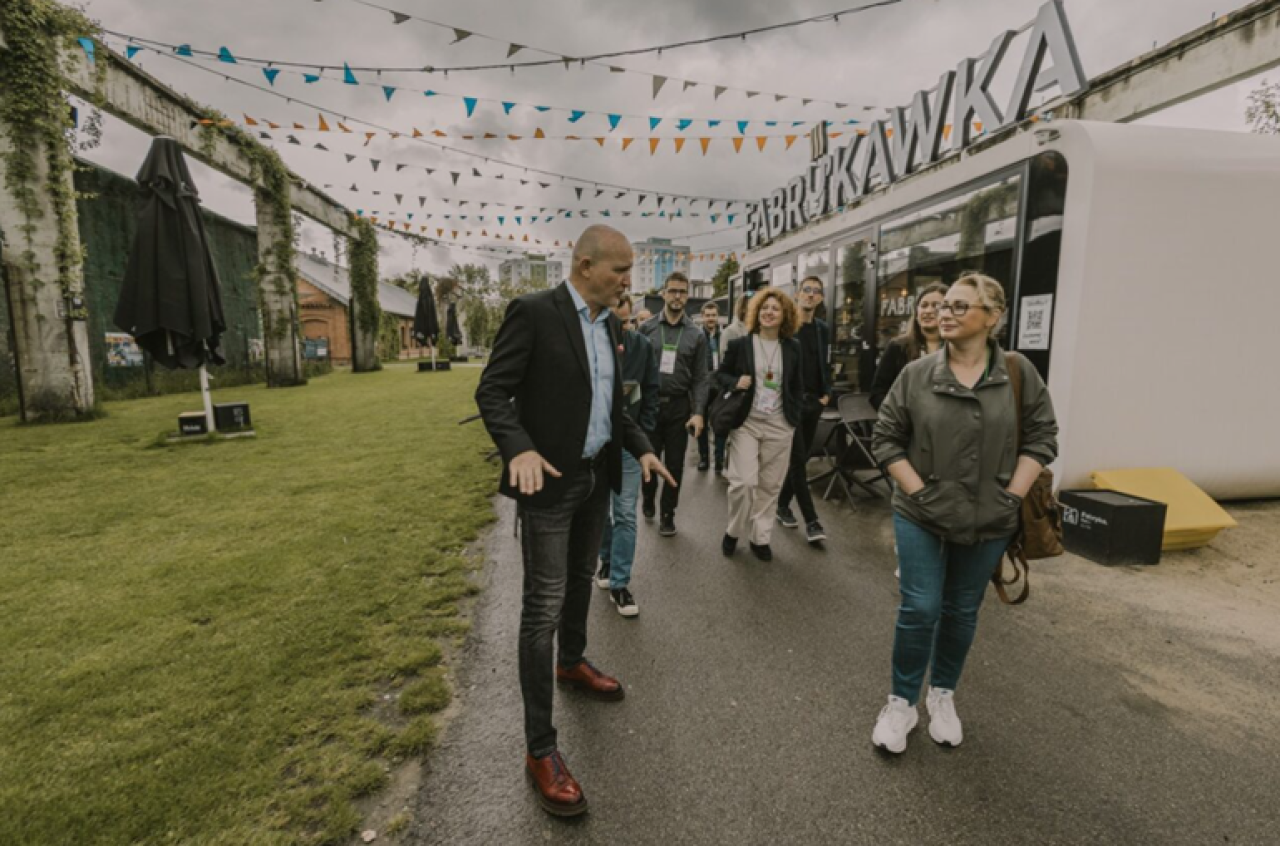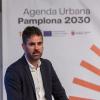On the last week of May 2025, the industrial Polish city of Dąbrowa Górnicza became the vibrant stage for the fifth transnational meeting of the URBACT In4Green network. It wasn’t just another project meeting. It was a living proof of how a group of cities across Europe is turning the green transition of industrial areas into something tangible, strategic, and collective.
As delegates arrived from across nine countries, there was an air of enthusiasm and genuine curiosity. Hosted impeccably by the Municipality of Dąbrowa Górnicza, the two-day event combined formal learning sessions, local site visits, dynamic exchange formats, and plenty of room for spontaneous connection. This mixture created not only a productive working environment but also a memorable experience for all involved.
Urban Planning Meets Practice: The Transfer Workshop
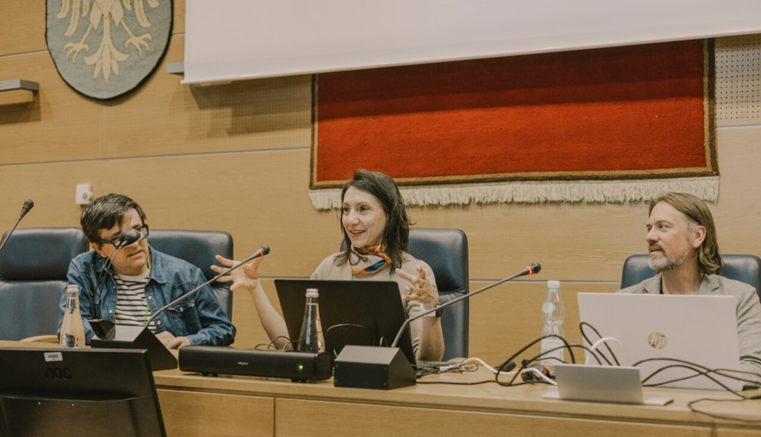
© Photo: Sara Malicka.
The first day began in the elegant City Hall with a focus on strategic urban planning. In Transfer Workshop 4, three cities — Avilés (Spain), Famalicão (Portugal), and Solingen (Germany) — shared their unique approaches to planning the future of their urban-industrial landscapes.
Avilés showcased a model of public-private cooperation aimed at fostering innovation as a key driver for industrial transition. Famalicão presented a long-term participatory strategic planning process, demonstrating how consistent civic engagement has helped shape a resilient urban future. Solingen impressed the audience with its sustainability strategy, a living document integrated into the municipal budget and backed by a solid system of monitoring indicators.
These weren’t just dry PowerPoint presentations. They were stories of transformation, challenges, and political commitment. After the presentations, participants broke into small groups to reflect on what elements they could adapt to their own cities. The room buzzed with ideas, and more than one participant left the session inspired to go home and push their local plans a step further.
Two Working Groups, One Shared Challenge
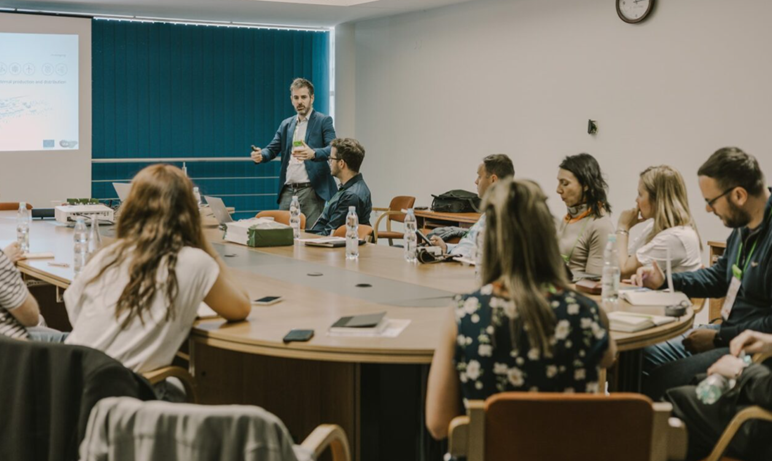
© Photo: Sara Malicka.
While the global challenge of In4Green is to green Europe’s industrial cities, each partner city brings a different set of priorities to the table. This is why the network is structured around four Thematic Working Groups (TWGs). In Dąbrowa Górnicza, it was time for TWG 3 and TWG 4 to take the spotlight.
TWG 3, led by Ad Hoc Expert Mar Santamaría, explored the digitalisation of industry and innovation ecosystems. TWG 4, facilitated by Lead Expert Jose Costero, delved into energy transition and climate neutrality. Both sessions followed a similar format: a curated selection of good practices from other EU-funded projects, a focus on governance and monitoring, and a practical group exercise.
What stood out was not only the relevance of the examples — from digital twins in industrial parks to community-driven energy plans — but the commitment of participants to extract lessons they could really use. Each working group felt less like a lecture and more like a collaborative workshop.
Learning by Seeing: Industrial Strategy on the Ground

© Photo: Sara Malicka.
That afternoon, the network visited one of Dąbrowa Górnicza's most strategic projects: the city-led Special Economic Zone. Developed proactively to attract firms committed to green and digital innovation, the zone exemplifies how municipalities can lead the way in rethinking industrial policy.
Participants had the rare chance to visit NGK Ceramics Poland, a Japanese-owned company that produces high-tech filters and catalytic converters. Through a guided tour and technical presentation, visitors learned how the plant contributes to reducing emissions in combustion engines while investing in greener production processes.
The visit sparked thoughtful conversations: How can public investment de-risk green transition for companies? What role can cities play in pre-empting economic change? And how do we balance industrial competitiveness with environmental urgency?
Regenerating the Urban Core: Factory Full of Life
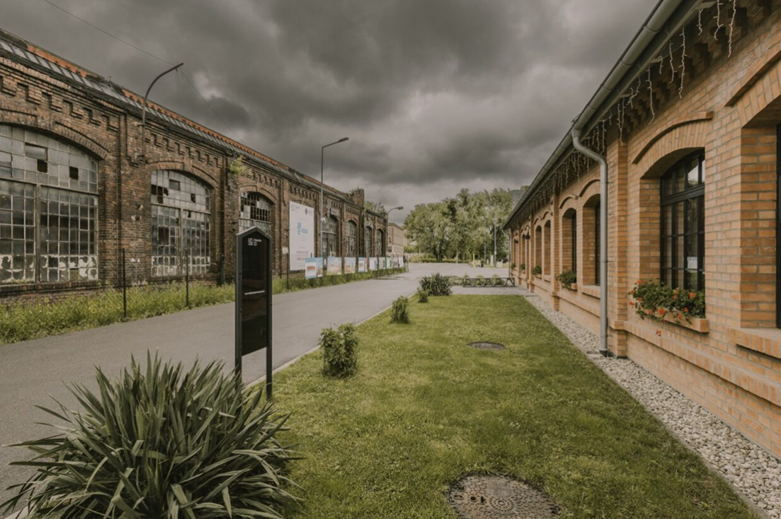
© Photo: Sara Malicka.
If the first day focused on the outskirts and industrial future, day two took us to the heart of the city. The morning started with a site visit to the "Factory Full of Life", a bold urban regeneration project converting an abandoned industrial site into a new mixed-use hub for culture, housing, food, retail and offices.
The symbolism was powerful. What once stood as a decaying monument to industrial decline is now becoming a catalyst for urban renewal. Partners walked through restored buildings already housing bars and community spaces, and through construction sites that will soon become housing and office complexes. The project served not only as a case study but as a tangible manifestation of what cities can do when vision meets political will.
Fast and Focused: Speed Dating for IAP Challenges

© Photo: Sara Malicka.
Back at the Factory Full of Life, the mood shifted to something dynamic and a bit playful: the speed dating session. But instead of romantic interests, the goal was to share and discuss the toughest challenges each city is facing in developing its Integrated Action Plan (IAP).
In 10-minute bilateral exchanges, every partner had the chance to hear what others are struggling with and offer input. From bureaucratic bottlenecks to stakeholder fatigue, the topics were honest and real. By the end, each participant had not only identified common struggles but had gathered nine different perspectives on their own dilemma.
A Celebration of Ideas: PechaKucha Presentations
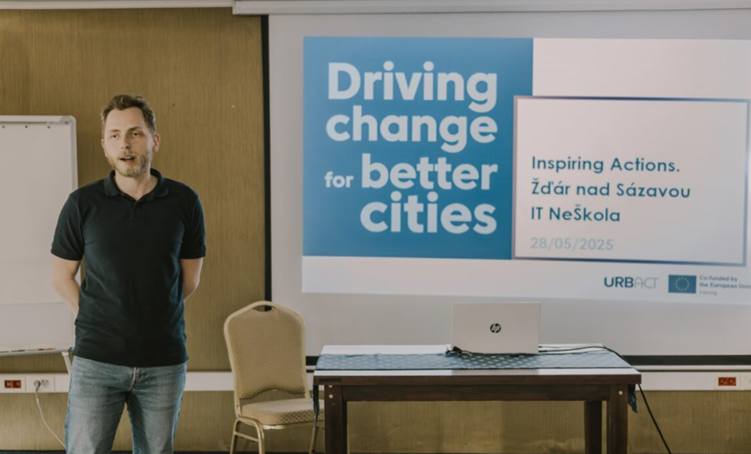
© Photo: Sara Malicka.
Later that afternoon, energy levels remained high as each city took the stage again — this time to present one action they feel especially proud of within their IAPs. The format: PechaKucha. Twenty slides, twenty seconds each. No room for fluff.
From circular economy pilots to training programmes for green jobs, the breadth of ideas was impressive. The rapid-fire presentations turned into a celebration of creativity and commitment. As one participant put it, "We may be small cities, but we’re not short on vision."
Wrapping Up and Looking Ahead
The final session was a chance to reflect, plan and say goodbye (for now). Project coordination, communication updates, and an early look at the final transnational meeting in Salerno were all covered. But what truly wrapped up the event was not an agenda item, but a sunset BBQ and boat ride on Pogoria Lake. It was a moment to enjoy, recharge and realise that collaboration is not only about content but connection.
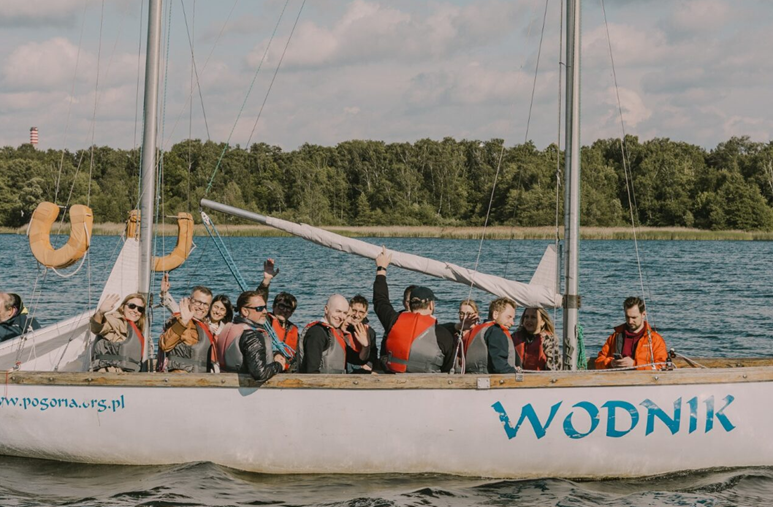
© Photo: Sara Malicka.
The Power of Networks
What made the Dąbrowa Górnicza meeting special was not just the content or the logistics (though both were impeccable). It was the energy. The openness. The sense that across languages and local contexts, these ten cities are part of something bigger.
In4Green is not just about industrial areas or green technologies. It’s about how we plan, how we govern, and how we build alliances to face complex transitions. And it’s about doing all this while keeping people, places and partnerships at the centre.
About In4Green
In4Green is an Action Planning Network co-funded by the European Union through the URBACT IV programme and the European Regional Development Fund (ERDF). It brings together ten small and medium-sized industrial cities committed to accelerating their green transition by working on integrated and participatory action plans. The project runs from June 2023 to December 2025.

